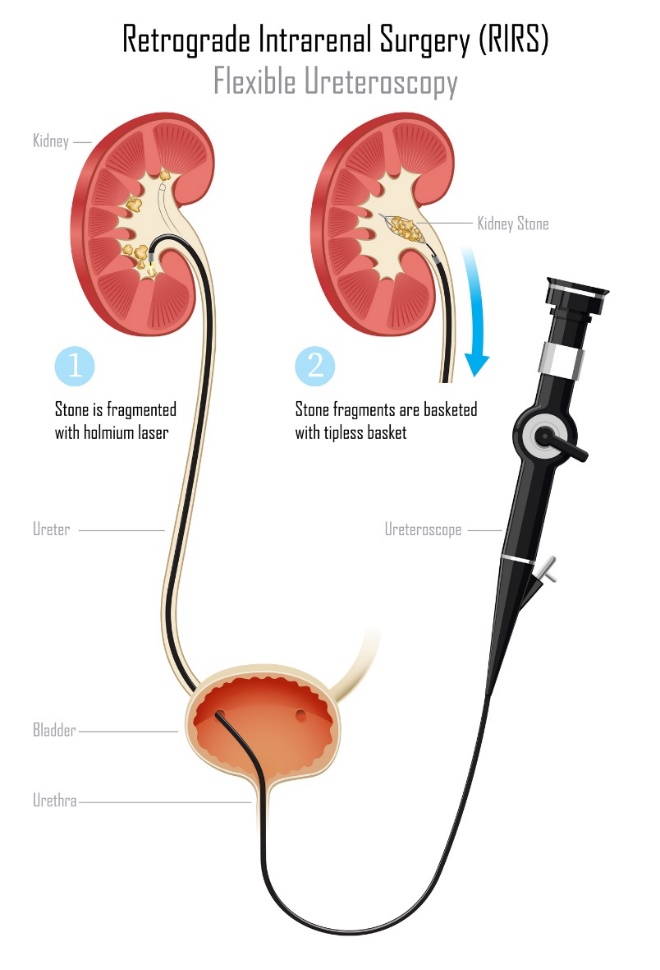What helps dissolve kidney stones? Treatment - drugs and surgery
The treatment chosen depends on the size and number of urinary stones, clinical symptoms and the patient's health.
Treatment of urolithiasis:
- Conservative
- Surgical
Conservative treatment
Conservative treatment of urolithiasis consists of affecting the spontaneous outflow of a urinary concretion that has already left the kidney.
Spontaneous outflow is the most common method of removal. It is performed for small urinary stones without the risk of obstruction (narrowing) of the urinary tract.
Conservative treatment consists of regimen measures such as adequate drinking and dietary modification. Medical treatment with analgesics, antispasmodics and anti-inflammatory drugs is also necessary.
The aim is to relieve pain, eliminate inflammation and excessive muscle contractions.
It is possible to indicate to the patient special drugs that promote spontaneous departure and dissolution of lithiasis. Concretions up to a maximum size of 4 to 6 mm can be flushed out naturally through the urinary tract.
Diuretic treatment promotes urinary excretion. Drugs reduce calcium excretion and uric acid production.
In the case of bacterial infections, antibiotics are indicated.
Ultrasound lithotripsy (shock wave)
A non-invasive, non-operative method is the breaking of concretions using a high-energy shock wave. It is professionally called ultrasound lithotripsy (ESWL).
Its aim is to break up the urinary stone. This is then expelled from the urinary tract in the form of smaller pieces or fine dust.
In this method, medications are given to relieve pain, spasmolytics to eliminate muscle contractions or anti-inflammatory drugs and antibiotics.
This type of therapy uses sound vibration waves to create strong shock waves. The procedure takes up to one hour and can be mildly painful. The patient is given a mild sedative or anesthetic before the procedure.
Side effects of the procedure may include the temporary presence of blood in the urine, bruising on the back, and discomfort as the concretion fragments pass through the urinary tract.
ESWL is not recommended in case of pregnancy, risk of bleeding, presence of infection and other medical conditions. The doctor decides on the suitability of the procedure.
Surgical treatment
The choice of surgical intervention depends on the exact location of the concrement, its size and degree of hardness.
Percutaneous extraction (nephrolithotomy)
Percutaneous extraction is a surgical procedure in which a special nephroscope is inserted into the affected kidney through the skin. The procedure is performed under general anaesthesia. It is also used to remove concretions of larger size (approximately 2 cm).
This procedure is recommended in case of numerous stones in the kidney or very hard kidney stones.
Urethroscopy
In the presence of a stone in the ureter or bladder, urethroscopy is used. This procedure is also often used for concretions in the kidney. The operation is performed under general anaesthesia of the patient.
The procedure is performed using an endoscopic device called a ureteroscope. It is introduced into the affected area through the urinary tract.
The laser fiber breaks thecontrement into small pieces and dust, which the patient then spontaneously urinates.
After breaking the urinary stone, it can be pulled out using a special cup.
Using a laser to break up the concrement has many advantages. It is possible to break stones of different sizes and stiffness during the procedure. Laser surgery entails a minimum of postoperative complications.
Postoperative regimen
The basis of the postoperative regimen is adequate drinking, approximately 2 to 3 liters of fluids per day. The aim is to flush the urinary tract and eliminate even the smallest remnants of urinary stone.
Postoperative treatment includes medication to relieve pain, muscle contractions, inflammation and prevent infection.











